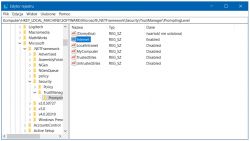Hello, of course he can do it, so:
We start with the documentation, in the appendix: K9F4G08U0F.
We open the PDF and read on page 10 on the organization of memory:
Page: 2k + 64 Bytes = 2048 + 64 bytes
Block: 64 Pages
Device: 4096 Block
Well, we set the NANDLite manually:

If you do not want to enter the parameters by hand, instead of using the Detect layout button, search the list for a memory replacement with the same layout geometry.
For K9GAG08U0F, the replacement will be:
- EN27LN4G08
- MT29F4G08ABADAWP
but in total the fastest to choose EN27LN4G08-25TCP because it is 5th from the top.


